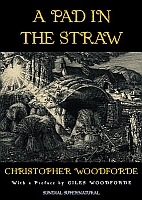![midnight-and-moonshine-web[2]](/wp_content/uploads/2012/12/midnight_and_moonshine_web2.jpg) Midnight and Moonshine by Lisa L Hannett and Angela Slatter
Midnight and Moonshine by Lisa L Hannett and Angela Slatter
Published by Ticonderoga Publications
ISBN: 9781921857300
Angela Slatter and Lisa L Hannett have become well known for their collaborative short fiction work. Last year they won an Aurealis Award for it. They’ve also won plenty of awards for their individual efforts, including Ditmar, Aurealis and British Fantasy Award wins and World Fantasy Award nominations. So we’ve come to expect good things from these two, especially when they work together. And now they’ve worked together on an entire book – the mosaic novel, Midnight & Moonshine.
A mosaic novel is like a novel by stealth – a collection of individual short stories, each self-contained, yet featuring repeated characters, themes and consequences to make the collection a far greater narrative as a whole. For Midnight & Moonshine, Hannett and Slatter have retold the Norse mythology of Ragnarok, woven in with Faerie lore, in the new world of America.
I won’t give away any particular details. Suffice to say that the central recurring theme is the character of Mymnir, the white raven. And such a brilliant character she is, beautiful and terrible, immortal, powerful and sometimes all too human. To explain the general focus of the book, I’ll use the official blurb:
The gods are dead, but will not be forgotten.
When Mymnir flees the devastation of Ragnarok, she hopes to escape all that bound her to Ásgarðr — a heedless pantheon, a domineering brother, and her neglectful father-master, Óðinn. But the white raven, a being of memory and magic, should know that the past is not so easily left behind. No matter how far she flies, she cannot evade her family…
In planting seeds of the old world in the new, Mymnir becomes queen of a land with as many problems as the one she fled. Her long-lived Fae children ignite and fan feuds that span generations; lives are lost and loves won because of their tampering. Told in thirteen parts, Midnight and Moonshine follows the Beaufort and Laveaux families, part-human, part-Fae, as they battle, thrive and survive in Mymnir’s kingdom.
Midnight and Moonshine is a collection of interconnected tales with links between them as light and strong as spider-silk. From fire giants to whispering halls, disappearing children to evening-wolves, fairy hills to bewitched cypress trees, and talking heads to moonshiners of a special sort, Midnight and Moonshine takes readers on a journey from ninth century Vinland to America’s Deep South in the present day. Hannett and Slatter have created a mosaic novel of moments, story-tiles as strange as witchwood and withywindles.
The stories are told from a variety of differing viewpoints and in a variety of styles, but the powerful combined voice of Hannett and Slatter shines through consistently. These are two writers with a masterful touch for prose that is always enchanting, yet never prosaic. Each story is a complete and fascinating thing in its own right and, naturally, I preferred some more than others. Only one story didn’t really work for me on its own, but it still had important seeds of the greater narrative in it and was far from a bad story. Some of the high points for me were Kveldulfr, a really powerful horror story in its own right and an excellent insight into some of the smaller details of the greater narrative. The Red Wedding was another high point, as was Midnight, both excellent stories with memorable characters. Interestingly, these three stories appear in that order right in the middle of the book, so there’s definitely no slack in the middle of this collection.
Most collections are at their strongest in the beginning and the end, as that’s where editors usually put the strongest tales. With a mosaic like this, there’s a chronology at work that dictates the placing of stories. But this volume is only enhanced by that, as everything is informed by that which came before, adding the depth and scope.
Another favourite of mine is the final story, Seven Sleepers, that ties everything together and has a truly mythic quality, and is perhaps the most epic in scale. It leaves us without a certain amount of closure, yet a strong desire to know more. It’s clear there are more stories to be told about the Beauforts and the Laveaux, the two central families in these tales, and probably about Mymnir too.
This is an almost entirely original collection with only the penultimate story, Prohibition Blues, being previously published. That was included in the Damnation and Dames anthology (also from Ticonderoga Publications) and was, according to the Afterword, the catalyst for this entire book. So we have to thank Ticonderoga and editors, Liz Grzyb and Amanda Pillar, for putting together the Damnation and Dames anthology, which is itself a fantastic book. [Caveat – for purposes of transparency, myself and Felicity Dowker collaborated on a story called Burning, Always Burning which was published in Damnation and Dames.]
Midnight and Moonshine draws deeply on Hannett’s PhD subject, both author’s skill at fairy tales and two of the best existing mythologies (Norse and Fae) to create something with lashings of style. Norse gods and Fae folk, bayou and voodoo, prohibition and giants, epic quests and personal triumphs and tragedies, this collection explores them all and more. A brilliant collection, well worth your time and money. It should also be noted that, as is usually the case with Ticonderoga Publications, this is a beautiful artefact of a book as well, with stellar cover art by Kathleen Jennings, herself the recipient of many awards and nominations for her art. In this age of crappy graphic design and homogenous cover art, it’s a pleasure to see a book that is so exquisitely crafted by its authors and so beautifully presented by its publisher.
There’s no question that this collection has leapt straight onto my Books Of The Year list.
.



